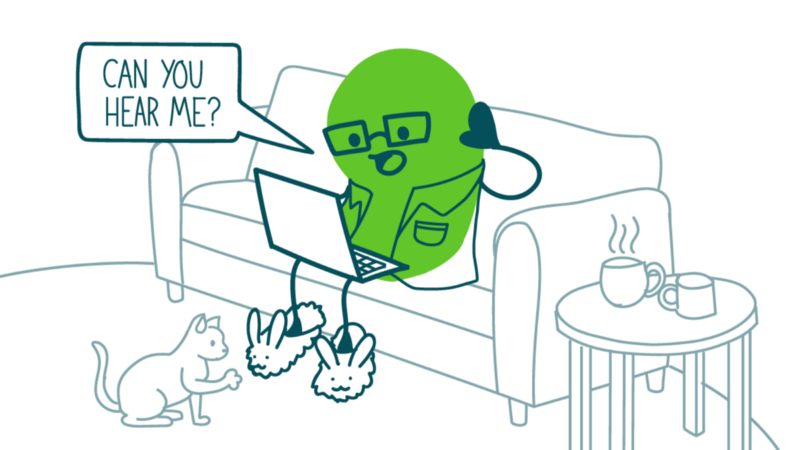
Here at We ❤ Health Literacy Headquarters, we’re always stressing how important it is to test your health materials with your priority audiences. And during COVID-19, remote testing may be the only safe way to do it. So this week, dear readers, we’re sharing tips for successful remote user testing:
- Work around WiFi barriers. Don’t let a lack of high-speed internet limit your pool of potential participants — there are ways around this common hurdle! You can talk to participants over the phone and avoid the internet entirely — or send session materials via snail mail to avoid screensharing issues. If your heart is set on high-speed internet sessions, try bringing the web to your participants! Find recruiters who can safely open their facilities for folks to join remote sessions. Or work with local community partners who can help provide internet access and distribute testing materials.
- Mix up your methods. Now’s a great time to explore unmoderated forms of data collection, like a video diary activity or unmoderated click testing. Or try a mixed-methods approach with moderated and unmoderated activities — this will provide richer data and help you focus live sessions on your most important research questions.
- Create a cozy remote environment. When possible, let participants join from whatever device they prefer — whether that’s a desktop, phone, or tablet. Do a tech check at the start of the session to make sure everyone’s comfy with the format. And take time to build rapport before diving into the subject matter. With the right approach, you can bring a cozy-living-room vibe to the sterile void of Zoom.
- Plan ahead for success. Talk with your team about how you’ll troubleshoot throughout the session — like extending session times to account for technology problems, having someone on deck to help fix any issues that come up, or prioritizing your discussion questions in case internet woes cut your session short.
As you conduct remote studies, be sure to keep track of what does and doesn’t work for your team and priority audiences. If you don’t get it perfect the first time, you can apply your lessons learned to future studies!
The bottom line: Social distancing doesn’t have to ruin your user testing game — get user feedback with remote testing.
Browse recent posts